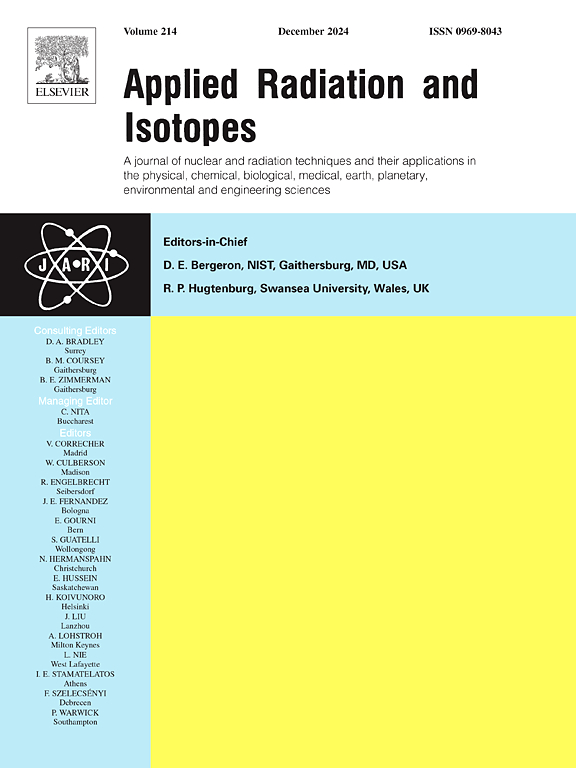Analysis of cement raw materials radioactivity in Chongqing
IF 1.6
3区 工程技术
Q3 CHEMISTRY, INORGANIC & NUCLEAR
引用次数: 0
Abstract
Under the guidance of national energy-saving and environmental protection policies, the addition of high-radioactivity waste materials to cement may lead to the accumulation of various radioactive elements, potentially harming human health if not properly controlled. This study selected three representative cement production companies in Chongqing for sampling based on their production line processes. The activities of the radionuclides 226Ra, 232Th, and 40K in raw materials, fuels, additives, and final products were measured using a low-background high-purity germanium spectrometer. Additionally, the internal and external exposure indices, radium equivalent activity, and annual effective dose were calculated. A curve illustrating the changes in radioactivity was put forward, and the variations in radioactivity during the process from raw materials to final products were analyzed. The main reasons for the changes in radioactivity during cement production were found to be the proportion of raw materials, the addition of high-radioactivity additives, and the accumulation from kiln calcination processes. Based on these findings, recommendations for controlling radioactivity during cement production were provided.
求助全文
约1分钟内获得全文
求助全文
来源期刊

Applied Radiation and Isotopes
工程技术-核科学技术
CiteScore
3.00
自引率
12.50%
发文量
406
审稿时长
13.5 months
期刊介绍:
Applied Radiation and Isotopes provides a high quality medium for the publication of substantial, original and scientific and technological papers on the development and peaceful application of nuclear, radiation and radionuclide techniques in chemistry, physics, biochemistry, biology, medicine, security, engineering and in the earth, planetary and environmental sciences, all including dosimetry. Nuclear techniques are defined in the broadest sense and both experimental and theoretical papers are welcome. They include the development and use of α- and β-particles, X-rays and γ-rays, neutrons and other nuclear particles and radiations from all sources, including radionuclides, synchrotron sources, cyclotrons and reactors and from the natural environment.
The journal aims to publish papers with significance to an international audience, containing substantial novelty and scientific impact. The Editors reserve the rights to reject, with or without external review, papers that do not meet these criteria.
Papers dealing with radiation processing, i.e., where radiation is used to bring about a biological, chemical or physical change in a material, should be directed to our sister journal Radiation Physics and Chemistry.
 求助内容:
求助内容: 应助结果提醒方式:
应助结果提醒方式:


